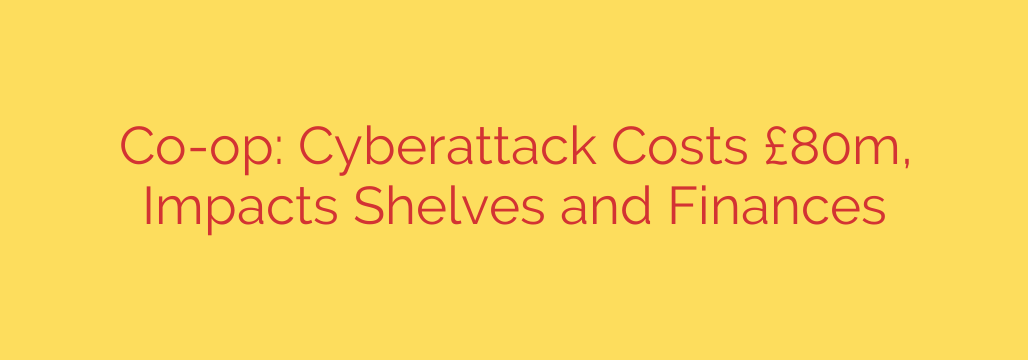
Supply Chain Under Siege: The Staggering Cost of a Third-Party Cyberattack
In today’s interconnected business world, your company’s security is only as strong as your weakest link. For one major retailer, this lesson came with a staggering £80 million price tag, revealing a critical vulnerability that many businesses overlook: the cybersecurity of their suppliers. This incident serves as a powerful case study, demonstrating how a breach in your digital supply chain can inflict as much damage as a direct assault on your own systems.
The attack didn’t target the retailer’s servers directly. Instead, cybercriminals infiltrated a third-party IT provider responsible for managing crucial supply chain and payment processing software. This single point of failure triggered a catastrophic domino effect, paralyzing core business operations for an extended period.
The Financial Fallout and Operational Chaos
The financial repercussions were immense, with the total cost of the incident ballooning to an estimated £80 million. This figure wasn’t just about ransom demands or IT recovery fees; it encompassed a wide range of business losses, including:
- Lost Sales: With supply chains crippled, shelves went empty. The inability to restock popular items led directly to a significant drop in revenue.
- Operational Disruption: The attack created what was described as “phantom products”—the system incorrectly showed stock was available when warehouses were empty. This made it impossible to place accurate orders, grinding logistics to a halt.
- Remediation and Recovery Costs: Extensive resources were required to restore systems, verify data integrity, and implement more secure solutions, contributing heavily to the overall cost.
This incident highlights a critical truth: the consequences of a cyberattack extend far beyond data loss. The disruption to core business operations can be the most damaging and costly aspect of a security breach. When your logistics, inventory, and payment systems fail, your business is effectively offline, even if your website is still running.
Key Cybersecurity Lessons from a Supply Chain Attack
This costly event offers vital lessons for any organization that relies on third-party vendors for critical functions. Protecting your business requires looking beyond your own network perimeter and scrutinizing the security of your entire digital supply chain.
Here are actionable security tips to mitigate your third-party risk:
Conduct Rigorous Vendor Due Diligence: Before integrating any third-party software or service, you must thoroughly vet the provider’s security posture. This includes reviewing their security certifications (like SOC 2 or ISO 27001), understanding their incident response plans, and asking for evidence of regular penetration testing. Make cybersecurity a non-negotiable part of your procurement process.
Map Your Digital Supply Chain: Do you know every vendor that has access to your systems or handles your critical data? It’s essential to map out all third-party dependencies to identify potential single points of failure. The more critical the function a vendor performs, the higher the level of security assurance you should demand.
Enforce Contractual Security Obligations: Your contracts with suppliers should explicitly outline their security responsibilities. This includes requirements for data encryption, access controls, breach notification timelines, and the right to audit their security practices. These legal safeguards are crucial for establishing accountability.
Develop a Comprehensive Incident Response Plan: Your response plan must include clear protocols for handling a breach originating from a third-party supplier. Who is the point of contact? How will you isolate affected systems? How will you communicate with customers and stakeholders? Practicing these scenarios is key to building resilience.
Ultimately, this incident is a stark reminder that in a connected economy, your risk is shared. By taking a proactive approach to managing third-party security, you can strengthen your defenses and prevent your business from becoming the next cautionary tale.
Source: https://go.theregister.com/feed/www.theregister.com/2025/09/25/empty_shelves_empty_coffers_coop/








